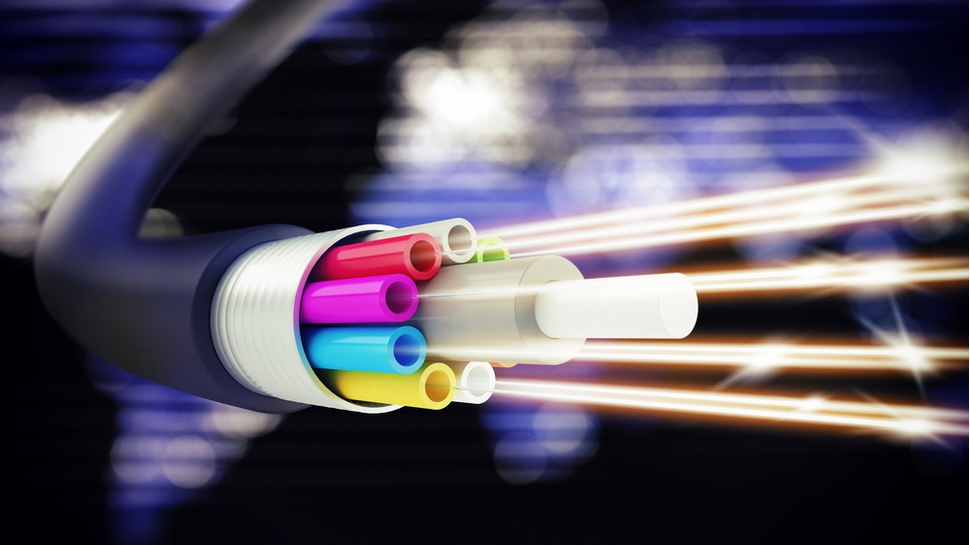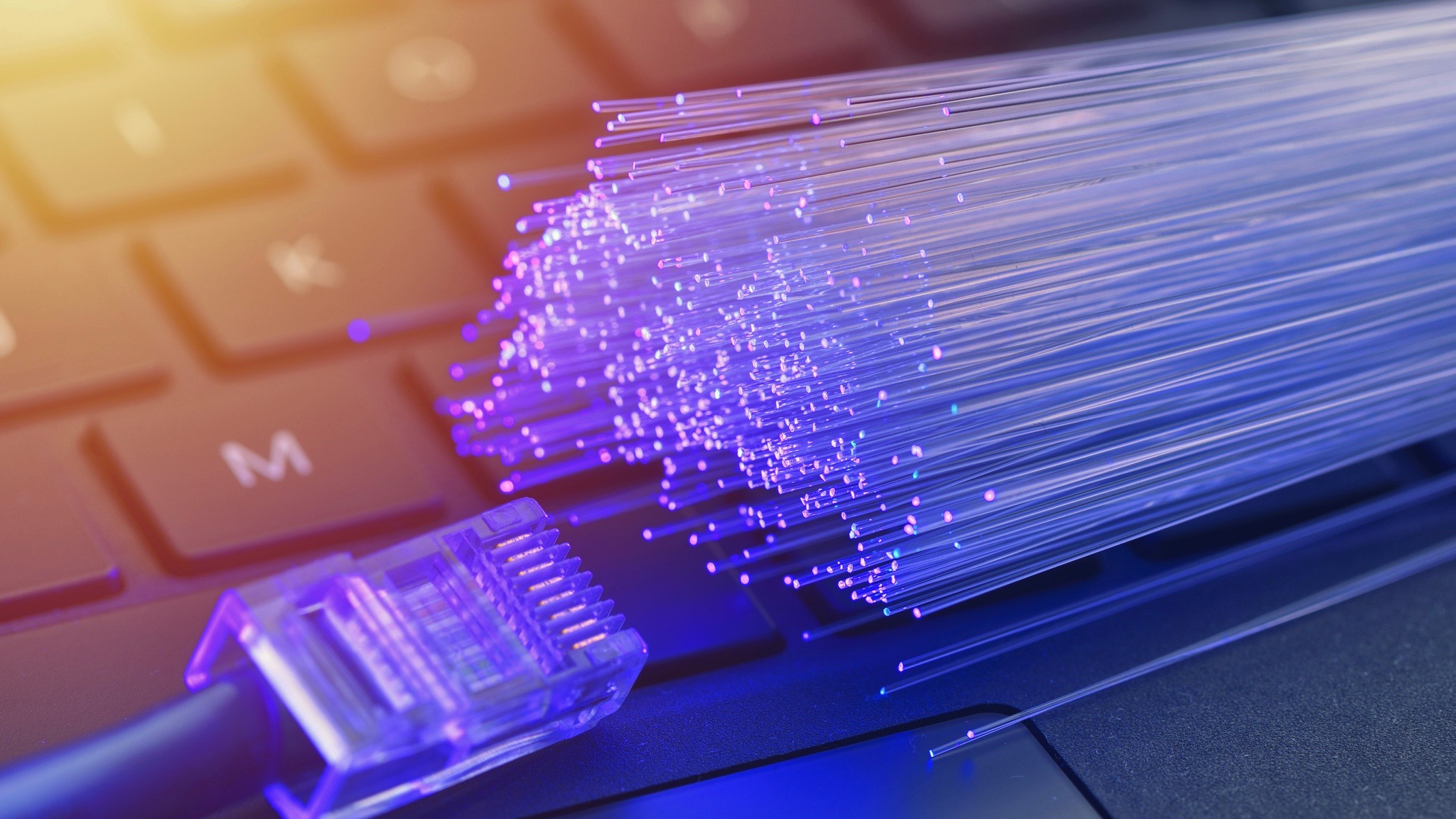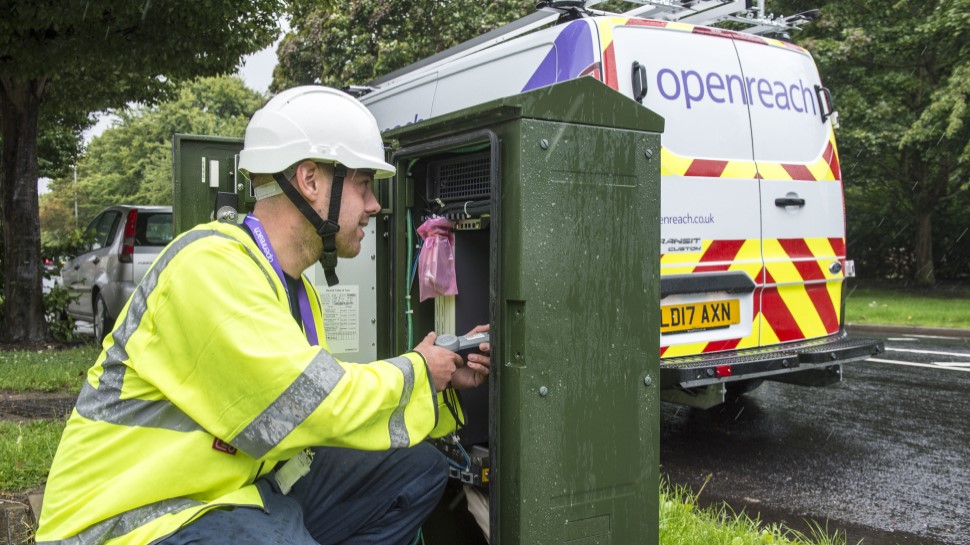What's the difference between fibre broadband and full fibre broadband?

Looking to upgrade your broadband deal because you need faster speeds? In this case, you may be tempted by a full fibre broadband package.
But, although they're quick, full fibre packages aren't right for everyone. This is because they can be expensive and many people don't need download speeds that are quite this fast.
Unsure whether a traditional fibre package or a full fibre deal is right for you? Well, making this decision can be incredibly tricky if you don't have all of the relevant information in front of you. Thankfully, we're here to help. In this detailed guide, we've outlined everything you need to know about the fibre vs full fibre debate, so you can make an informed decision about which option is best for your needs.
What is fibre broadband?
When we say 'fibre broadband', we're referring to 'fibre-to-the-cabinet' (FTTC) broadband. These connections primarily use fibre optic cables to supply your broadband, but they also rely on old copper wires for the last part of the journey. For this reason, these connections are sometimes called 'part-fibre broadband'.
With this type of connection, fibre optic cables run from a provider's broadband exchange to your nearest telephone cabinet (this is usually somewhere on the street outside your home). Then, copper wires run from here to the inside of your property.
Although these connections are more technologically advanced (and better) than the old ADSL connections that entirely rely on copper wires, they can still be slow and inefficient. This is because, the further your house is from the street cabinet, the more copper wiring is required and the slower your connection gets.
That said, part-fibre broadband remains an incredibly popular option in homes across the country. This is because it is a reliable and cheap option that provides speeds that are much faster than typical ADSL connections.
Sign up for breaking news, reviews, opinion, top tech deals, and more.
However, when we're discussing ADSL connections and FTTC connections, it's important to say that these are in the process of being phased out of the market due to the 'inefficiency' we mentioned above.
The sad reality is that the copper cables that have been the backbone of the nation's communications system for so long are starting to show their age and are now being replaced. So, although it is still possible to purchase fibre packages, the plan is that many will be removed from the market entirely by 2026, when Openreach has connected 25 million homes and businesses to its Ultrafast Full Fibre Broadband network.
This change may affect you sooner than this though. This is because the rollout is happening on a town-by-town basis. As soon as 75% of properties in your town or city have been connected to this new network, you won’t be able to buy old copper products if full fibre is available at your premises.

What is full fibre broadband?
By contrast, the term 'full fibre' is used to describe 'fibre-to-the-premises' (FTTP) connections, which are much faster and usually more expensive.
With this type of connection, the fibre optic cables run straight into your home and copper cables are not involved in the process whatsoever. This means that you can receive a much faster connection that allows you to do more with your internet.
However, although full fibre options provide rapid download speeds and reliable connections, we should stress that FTTP products are not universally available. That said, the rollout is happening quickly and the plan is that 25 million homes and businesses in the country will be able to receive a full fibre connection by December 2026.
Why are Openreach pushing full fibre so aggressively? Well, put simply, FTTP connections are faster, more reliable and less prone to interference than FTTC ones.

Why is full fibre broadband quicker?
Full fibre broadband packages are faster than standard fibre packages because they only use fibre optic cables to deliver your broadband connection. These are much quicker than the copper wires that are used by FTTC connections. Allow us to explain.
Fibre optic cables are capable of transmitting large volumes of data at the speed of light. As a result, they can provide homes with incredibly fast download and upload speeds. By contrast, FTTC or part-fibre connections use copper telephone wires for the final part of the connection. This severely limits the speeds you can expect to receive (although part-fibre packages are still much quicker than ADSL connections).
The slowdown caused by the copper wiring is higher than many people would expect. For example, most FTTC packages provide average download speeds of around 30Mbps to 80Mbps. But, by contrast, full fibre packages can provide download speeds that are in excess of 1Gbps.

Why do people choose full fibre over part fibre?
Most people choose a full fibre connection over a part-fibre connection for one reason: it's much faster. These extra speeds allow people to do much more with their internet connection (like letting multiple family members stream content at the same time) and they provide extra convenience, as there's no buffering or lag to worry about.
With a full fibre connection, even the busiest and largest households will be able to:
- Work from home without interruptions
- Download films and TV shows in UHD in seconds
- Play data-heavy games online without lag
- Stream in 4K Ultra HD with better quality and no buffering
- Upload files to the cloud and emails quickly due to faster upload speeds
- Connect a large number of devices thanks to the larger bandwidth
Added to this, it's also important to say that the improved technology that underpins the full fibre network also makes the connection much more reliable and less prone to interference. For these reasons, these connections are incredibly popular with people who work from home or rely heavily on their internet connection.

What other broadband options do we have in the UK?
Both part fibre and full fibre packages are incredibly popular. However, there's a chance that neither of these types of broadband are right for you.
Thankfully, if this is the case, a number of different types of broadband are available here in the UK. So, if you don't like the idea of a fibre or a full fibre connection, it's worth doing your research into the following types of broadband:
Find the best deal for you today
Decided whether a full fibre or a part-fibre broadband deal is right for you? Well, armed with this new knowledge, head over to our best broadband deals page. Here, we've provided a comprehensive rundown of the best deals available today. There's also loads more buying advice here, including extra hints and tips.
Ready to buy now? Simply put your postcode into our widget below. Provide us with your postcode and we'll show you all of the best deals that are available at your address. You can even use the filters and ensure you're only seeing deals that match your requirements. Your new broadband deal could be only a couple of clicks away!

Tom is a freelance copywriter and content marketer with over a decade of experience. Originally from an agency background, he is proud to have worked on campaigns for a number of energy providers, comparison sites and consumer brands.